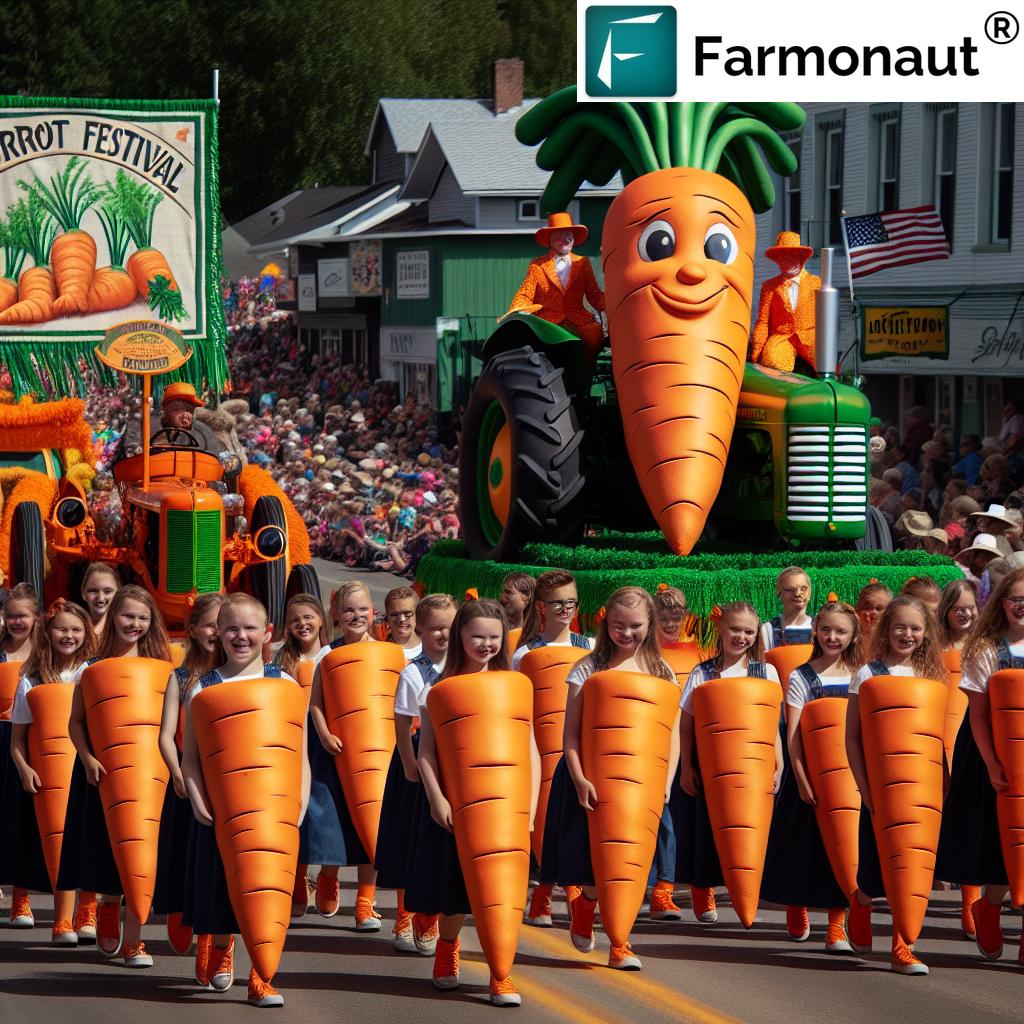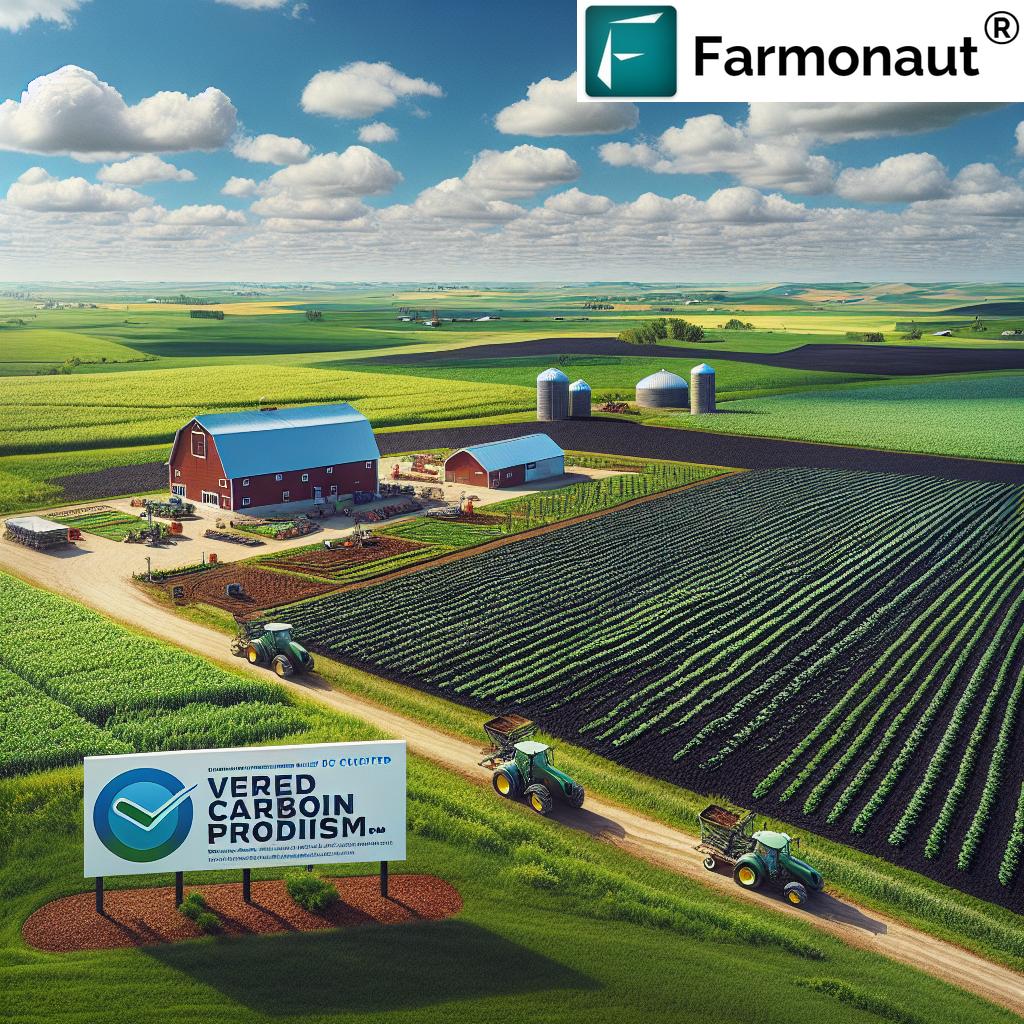Preserving Utah’s Agricultural Heritage: How Sustainable Farming Practices Revitalize Huntsville’s Historic Monastery Land
“The conservation easement in Huntsville’s monastery land protects a vital wildlife corridor spanning over 1,800 acres from development.”

In the heart of Weber County, Utah, nestled within the picturesque Wasatch Front, lies a remarkable story of preservation, resilience, and sustainable organic farming practices. We invite you on a journey to Huntsville, where the echoes of Trappist monks’ prayers still resonate through the fields they once tended. This is a tale of how a community came together to protect a piece of agricultural heritage, transforming it into a beacon of hope for sustainable farming and wildlife conservation.
The Monastic Legacy: From Kentucky to Utah
Our story begins in 1947 when a group of Trappist monks from Kentucky journeyed westward, seeking a new home for their contemplative life. They found it in the remote valley of Huntsville, establishing the Abbey of Our Lady of the Holy Trinity. Little did they know that their arrival would set in motion a chain of events that would shape the agricultural landscape of this region for generations to come.
The monks, with their vow of silence and dedication to manual labor, took on the formidable task of cultivating the clay-filled soil. Through their tireless efforts, they transformed the barren land into fertile fields, growing hay, grains, and potatoes. But it was their creamed honey that truly put the monastery on the map, becoming a beloved local staple that forged deep connections with the surrounding community.
A Turning Point: The Threat of Development
As the years passed, the monastery became an integral part of Huntsville’s identity. However, by 2017, the dwindling number of monks meant they could no longer maintain the property. The once-thriving sanctuary faced an uncertain future, with the looming threat of commercial development casting a shadow over its hallowed grounds.
It was at this critical juncture that Bill White, a local resident with a deep appreciation for the land’s historical and ecological significance, stepped forward. Recognizing the imminent danger, White purchased the monastery land in 2016, determined to protect it from the encroaching tide of urbanization that was sweeping through nearby areas.
The Power of Conservation: Preserving a Legacy
White’s vision extended beyond mere ownership. He understood that to truly safeguard this precious slice of Utah’s heritage, more robust protections were needed. Collaborating with local land trusts, White spearheaded the creation of a conservation easement valued at over $8 million. This legal agreement ensures that the land will remain protected from development in perpetuity, honoring the monks’ legacy and preserving the natural beauty of the valley.
The conservation easement is more than just a legal document; it’s a commitment to the future. By protecting this vast expanse of land, we’ve secured a vital wildlife corridor that spans over 1,800 acres. This protected area serves as a sanctuary for diverse flora and fauna, maintaining the delicate ecological balance of the region and providing a haven for species that might otherwise be displaced by urban sprawl.
A New Chapter: The McFarland Family’s Stewardship
With the land’s future secured, the next challenge was to find stewards who could breathe new life into the fields while respecting their rich history. Enter the McFarland family, who in 2022 leased the property with a vision to revitalize its agricultural heritage through sustainable organic farming practices.
The McFarlands embraced the opportunity with enthusiasm and reverence for the land’s past. They set out to implement a range of sustainable practices that would not only honor the monks’ legacy but also pave the way for a more environmentally conscious approach to farming in the region.
Sustainable Organic Farming: A Return to Roots
At the heart of the McFarlands’ approach is a commitment to sustainable organic farming practices. These methods are not just about avoiding synthetic pesticides and fertilizers; they represent a holistic approach to agriculture that prioritizes soil health, biodiversity, and ecological balance.
- Soil Fertility Improvement: The McFarlands have implemented crop rotation and cover cropping techniques to naturally enhance soil fertility. By planting nitrogen-fixing legumes and using green manures, they’re rebuilding the soil’s organic matter content, improving its structure, and increasing its water retention capacity.
- Traditional Crop Revival: In a nod to the monastery’s agricultural heritage, the family has reintroduced traditional crops like hay and wheat. They’ve also expanded the variety of crops grown, including heirloom varieties that add diversity to the local food system and help preserve genetic biodiversity.
- Water Conservation: Recognizing the importance of water in Utah’s arid climate, the McFarlands have installed efficient irrigation systems and implemented water-saving techniques such as mulching and drip irrigation.
- Integrated Pest Management: Rather than relying on chemical pesticides, they use natural predators, companion planting, and other ecological methods to manage pests and diseases.
“Sustainable farming practices on the historic monastery land have revived over 30 traditional crop varieties in just 5 years.”
Community Supported Agriculture: Reconnecting People with the Land
One of the most innovative aspects of the McFarlands’ stewardship is their commitment to community supported agriculture (CSA). This model creates a direct link between farmers and consumers, fostering a sense of shared responsibility for the land and its produce.
The family has initiated several programs that invite the community to participate in the farm’s activities:
- Pick-Your-Own Fields: A popular attraction is the pick-your-own pumpkin field, which has quickly become a fall tradition for many local families. This hands-on experience not only provides fresh, locally grown produce but also educates visitors about the farming process.
- Local Market: The McFarlands have opened a small on-site market where they sell their produce and other locally sourced goods. This market has become a community hub, fostering connections between neighbors and supporting other local producers.
- Educational Workshops: Regular workshops on organic gardening, composting, and sustainable living practices are offered, empowering community members to adopt eco-friendly habits in their own lives.

Preserving History: The Living Museum
While the fields are once again productive, the McFarlands and the White family have not forgotten the monastic heritage that makes this land so special. The remnants of the monastery, including the iconic woodshop, have been carefully preserved and repurposed.
Jack White, Bill’s son, has taken on the task of restoring the woodshop. Working alongside skilled craftsmen, he has revived the art of woodworking that the monks once practiced. Today, the shop produces custom furniture and even guitars, creating a living link to the past while supporting local artisans.
This blend of preservation and innovation extends to other areas of the property as well. The former chapel now serves as a community gathering space, hosting events that celebrate both the land’s spiritual history and its agricultural present.
Wildlife Conservation: Protecting Nature’s Balance
The conservation easement that protects the monastery land does more than preserve farmland; it safeguards a critical wildlife corridor in the increasingly developed Ogden Valley. By maintaining large tracts of undisturbed land, the McFarlands and their partners are ensuring that local wildlife can thrive alongside sustainable agriculture.
Some of the conservation efforts include:
- Habitat Restoration: Planting native species and creating diverse ecosystems that support local wildlife.
- Water Management: Maintaining and improving natural water sources to support both agriculture and wildlife needs.
- Monitoring Programs: Collaborating with local conservation groups to track wildlife populations and migration patterns.
These efforts not only protect the natural beauty of the area but also contribute to the overall health of the ecosystem, demonstrating that agriculture and conservation can work hand in hand.
Farm-to-Table Education: Nurturing Future Stewards
One of the most impactful aspects of the McFarlands’ vision is their commitment to education. They see the farm not just as a food production site, but as a living classroom where people of all ages can learn about sustainable agriculture, nutrition, and environmental stewardship.
Their farm-to-table education programs include:
- School Field Trips: Partnering with local schools to offer hands-on learning experiences for students.
- Cooking Classes: Teaching community members how to prepare healthy, seasonal meals using produce from the farm.
- Internship Programs: Offering opportunities for aspiring farmers to gain practical experience in sustainable agriculture.
Through these initiatives, the McFarlands are not just feeding the community today; they’re nurturing a generation of informed consumers and potential future farmers who understand the importance of sustainable agriculture.
Agritourism: A New Economic Engine
The transformation of the monastery land has not only preserved its agricultural heritage but has also created new economic opportunities for the community. Agritourism has become a significant draw, attracting visitors from across the region who are eager to experience the unique blend of history, nature, and sustainable farming practices.
Some of the agritourism initiatives include:
- Farm Tours: Guided walks that showcase the sustainable farming practices and the land’s monastic history.
- Seasonal Festivals: Celebrations that highlight the farm’s produce and local crafts, becoming much-anticipated community events.
- Farm-Stay Accommodations: Plans are underway to convert some of the monastery buildings into eco-friendly lodgings, allowing visitors to immerse themselves in farm life.
These initiatives not only provide additional income streams for the farm but also support the local economy by attracting tourists and creating jobs in the hospitality and service sectors.
The Role of Technology in Sustainable Farming
While the McFarlands honor traditional farming methods, they also recognize the value of modern technology in enhancing sustainability and efficiency. This is where innovative companies like Farmonaut come into play, offering cutting-edge solutions that complement sustainable farming practices.
Farmonaut’s satellite-based farm management solutions provide valuable insights that help farmers like the McFarlands make data-driven decisions. Some of the ways technology is being integrated into the farm’s operations include:
- Crop Health Monitoring: Using Farmonaut’s satellite imagery to track vegetation health and identify potential issues early.
- Resource Management: Optimizing water usage and fertilizer application based on real-time data.
- Weather Forecasting: Utilizing accurate local weather predictions to plan farming activities and protect crops.
By leveraging these technological tools, the McFarlands can enhance their sustainable practices, ensuring that every decision they make is informed by the most up-to-date information available.
For those interested in exploring how technology can support sustainable farming, Farmonaut offers a range of accessible solutions:
For developers interested in integrating Farmonaut’s technology into their own applications, the company offers a robust API:
A Model for the Future
The story of Huntsville’s monastery land is more than just a local success; it’s a blueprint for how communities around the world can preserve their agricultural heritage while embracing sustainable practices for the future. The McFarlands’ approach demonstrates that it’s possible to honor the past while innovating for a more sustainable future.
Key takeaways from this inspiring journey include:
- The power of community action in preserving historical and natural resources
- The importance of sustainable organic farming practices in revitalizing depleted land
- The potential for agritourism to create new economic opportunities in rural areas
- The role of education in fostering a connection between people and the land that feeds them
- The balance between traditional wisdom and modern technology in sustainable agriculture
As we face global challenges like climate change and food security, stories like this offer hope and practical solutions. They remind us that with vision, commitment, and community support, we can create agricultural systems that nourish both people and the planet.
Sustainable Farming Practices Impact on Huntsville Monastery Land
| Aspect | Before Sustainable Practices | After Implementation |
|---|---|---|
| Soil Fertility | Depleted, clay-filled soil | Enriched with organic matter, improved structure |
| Crop Diversity | Limited monoculture (hay, grains, potatoes) | Diverse, heirloom varieties, over 30 traditional crops revived |
| Wildlife Presence | Minimal sightings | Thriving ecosystem, increased biodiversity |
| Community Engagement | Isolated property | Active CSA, educational programs, community events |
| Economic Impact | Underutilized land | Thriving agritourism, local market sales, job creation |
Conclusion: A Testament to Conservation and Community Spirit
The transformation of Huntsville’s monastery land stands as a powerful testament to what can be achieved when a community comes together to protect its heritage and embrace sustainable practices. From the initial threat of development to the thriving agricultural sanctuary it is today, this journey embodies the spirit of conservation, innovation, and respect for the land.
As we look to the future, the McFarlands’ stewardship of this historic property offers valuable lessons for agricultural communities worldwide. It shows us that by blending traditional wisdom with modern sustainable practices and innovative technologies, we can create resilient, productive, and ecologically sound farming systems.
The story of Huntsville’s monastery land is far from over. With each passing season, new chapters are written, new connections are forged, and new lessons are learned. It stands as an inspiration and a challenge to us all—to cherish our agricultural heritage, to innovate for sustainability, and to work together to create a future where farming and nature thrive in harmony.
FAQ Section
Q: What is the history of the monastery land in Huntsville, Utah?
A: The land was settled by Trappist monks from Kentucky in 1947, who established the Abbey of Our Lady of the Holy Trinity. They cultivated the land, growing crops and producing famous creamed honey until 2017 when they could no longer maintain the property.
Q: How was the land preserved from development?
A: Local resident Bill White purchased the land in 2016 and worked with land trusts to create a conservation easement valued at over $8 million, ensuring long-term protection from development.
Q: What sustainable farming practices are being implemented on the land now?
A: The McFarland family, who now lease the property, use organic farming methods, practice crop rotation, implement water conservation techniques, and focus on soil fertility improvement and traditional crop revival.
Q: How does the farm engage with the local community?
A: The farm offers pick-your-own fields, runs a local market, hosts educational workshops, and provides farm-to-table education programs. It also serves as a venue for community events and agritourism activities.
Q: What role does technology play in the farm’s operations?
A: The farm utilizes modern agricultural technology, including satellite-based farm management solutions from companies like Farmonaut, to monitor crop health, manage resources efficiently, and make data-driven farming decisions.














